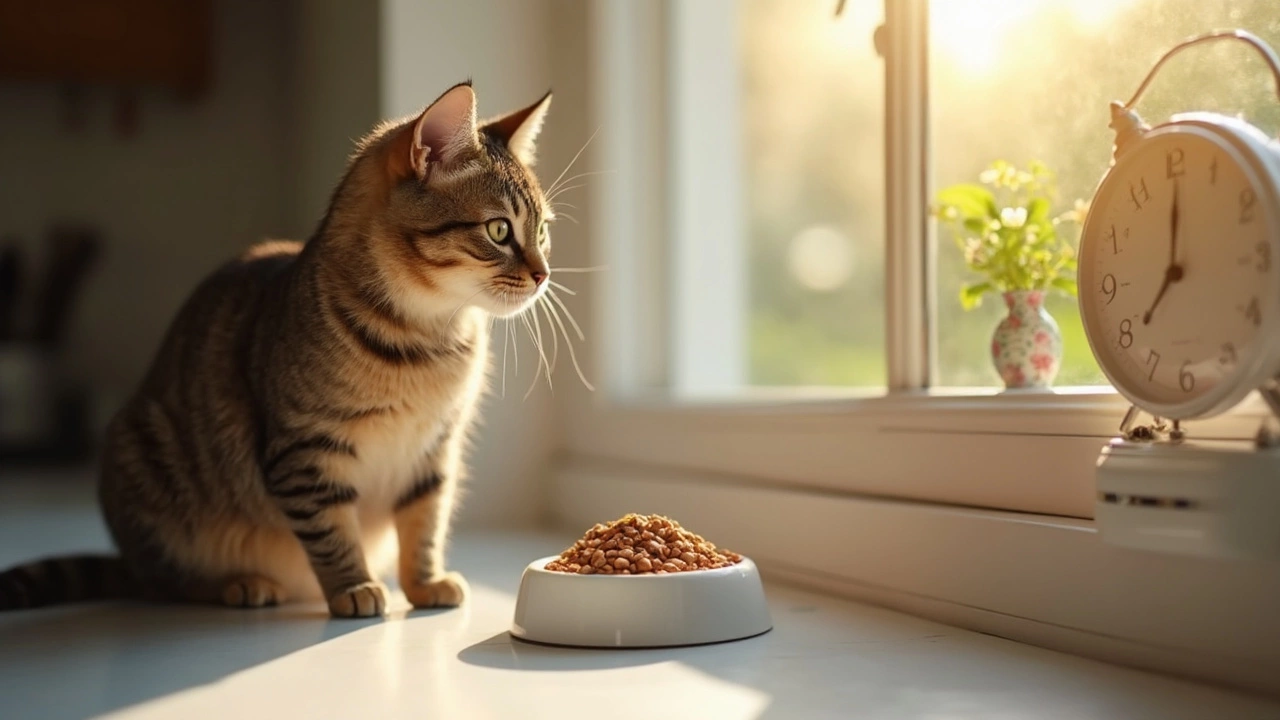Cat Feeding Tips: Easy Guidance for Everyday Cat Owners
Feeding your cat might feel like a simple task, but a few smart choices can make a big difference in their health and mood. Below are clear, hands‑on tips you can start using today.
How Often Should You Feed Your Cat?
Most adult cats do well on two meals a day – one in the morning and one in the evening. This routine matches their natural hunting pattern of short, frequent meals. If you have a kitten, aim for three to four small meals because they need more calories for rapid growth.
Pay attention to your cat’s weight. A cat that is gaining or losing weight may need a tweak in portion size or meal frequency. Use a kitchen scale or the feeding guide on the food bag to keep portions accurate.
Free‑feeding dry kibble works for some cats, but it can lead to overeating if you don’t monitor the bowl. If you choose to leave food out all day, pick a low‑calorie kibble and watch the bowl for emptiness.
When you travel or have guests, keep the feeding schedule consistent. Cats thrive on routine, and sudden changes can cause stress or missed meals.
Choosing Safe and Nutritious Cat Food
Look for a label that lists a high‑quality protein source – chicken, turkey, or fish – as the first ingredient. Cats are obligate carnivores, so protein should dominate the formula.
Avoid foods with vague terms like "meat meal" or "animal digest" unless they are clearly backed by a reputable brand. These can hide low‑quality fillers.
Watch out for common culprits in dry food: artificial colors, excessive grains, and by‑products. They add calories without nutritional benefit and can trigger allergies.If your cat has a sensitive stomach, try a limited‑ingredient diet that contains a single protein and a few simple carbs. This makes it easier to spot what might be causing a reaction.
Wet food is great for hydration, especially for cats that don’t drink much water. Aim for at least one wet meal per day, or add a bit of water to dry kibble.
When you’re unsure, compare the guaranteed analysis on the package. Aim for a protein content of 30% or higher, fat around 10‑15%, and low carbs.
Don’t forget treats – they should be less than 10% of daily calories. Use small pieces of cooked chicken or commercial cat treats that list real meat first.
Finally, keep food fresh. Store kibble in an airtight container and discard any opened wet food after 24 hours to prevent bacterial growth.
By timing meals, watching portion sizes, and picking clean food, you’re giving your cat a solid nutrition foundation. These steps are easy, cost‑effective, and can keep vet visits to a minimum.
Remember, every cat is unique. If you notice changes in appetite, weight, or litter box habits, adjust the feeding plan and talk to your vet. Small tweaks now can prevent bigger health issues later.
Now you have a practical roadmap: set a consistent schedule, choose protein‑focused food, avoid questionable ingredients, and monitor your cat’s response. Your kitty will thank you with extra purrs and a sleek coat.
Posted By Bryndle Redding On 28 Jun 2025 Comments (0)
Should You Leave Dry Cat Food Out All Day? Expert Feeding Advice for Healthy Cats
Wondering if you should leave dry food out for your cat all day? Learn expert advice, pros & cons, and smart tips for healthier, happier cats.
READ MORE